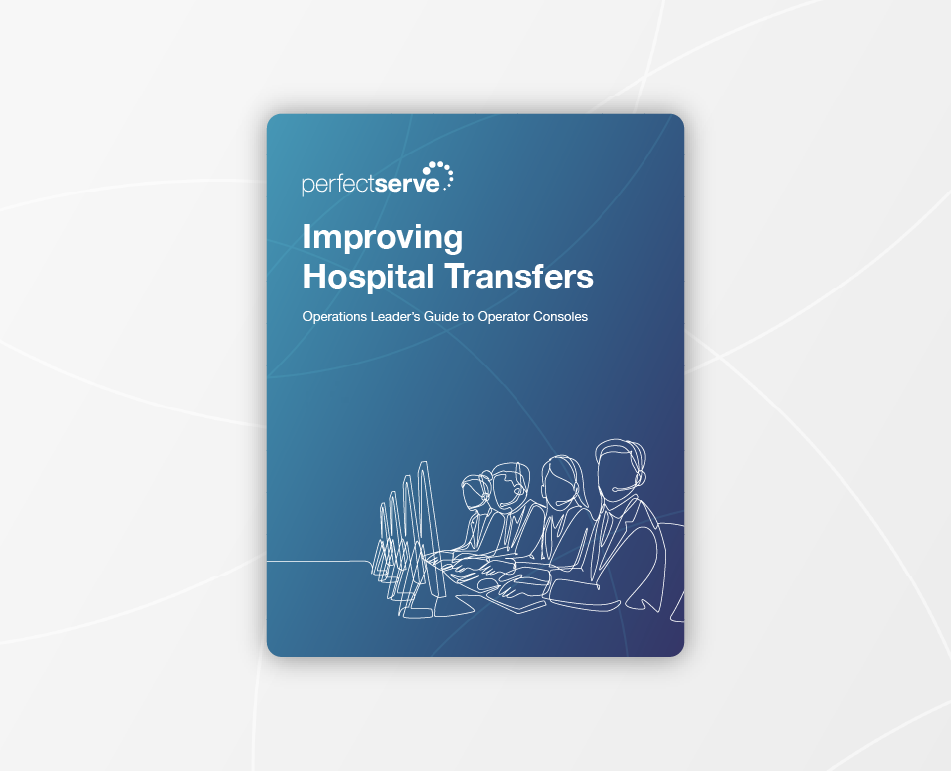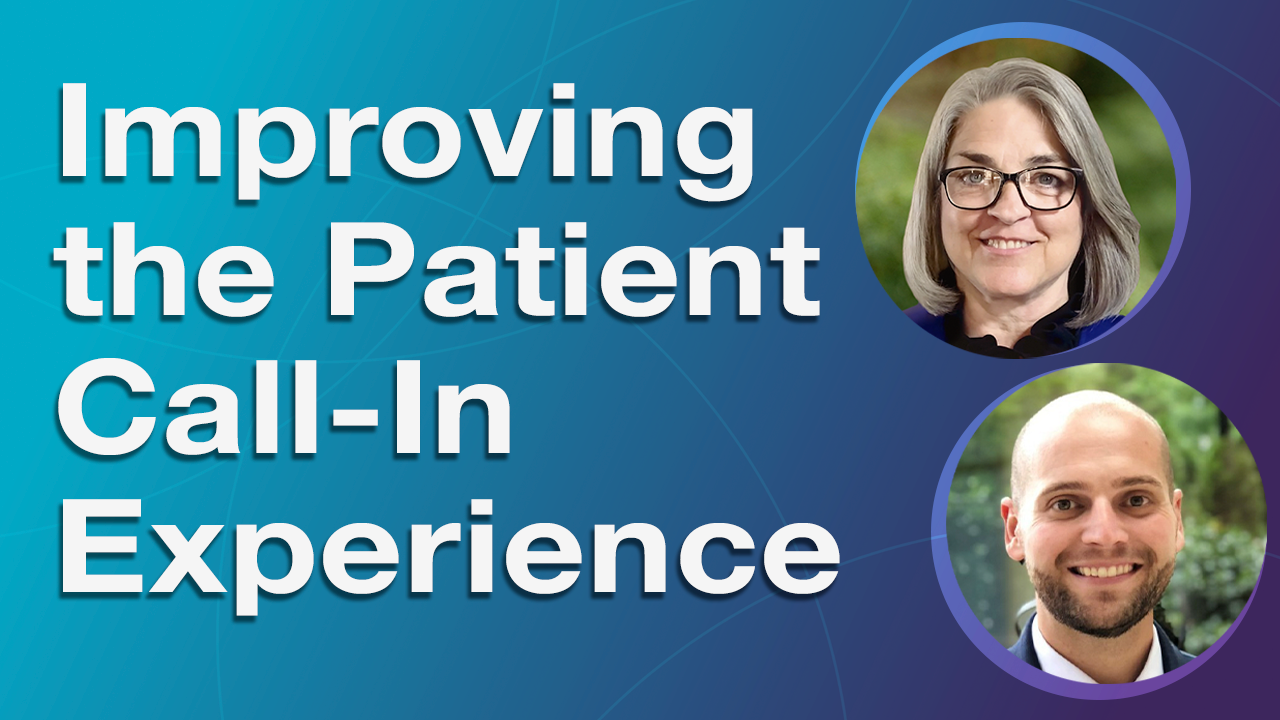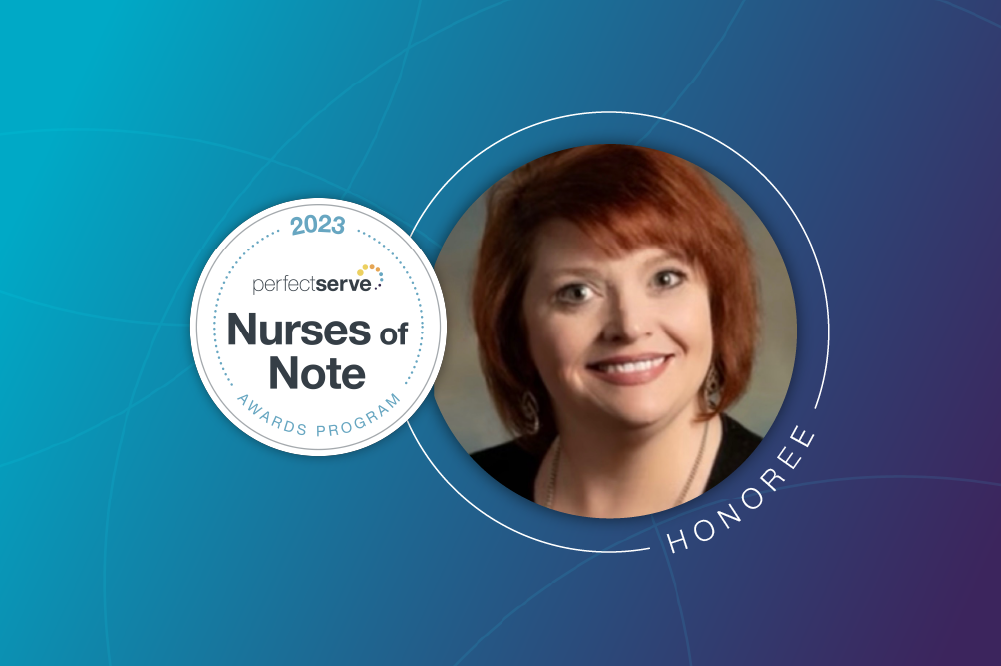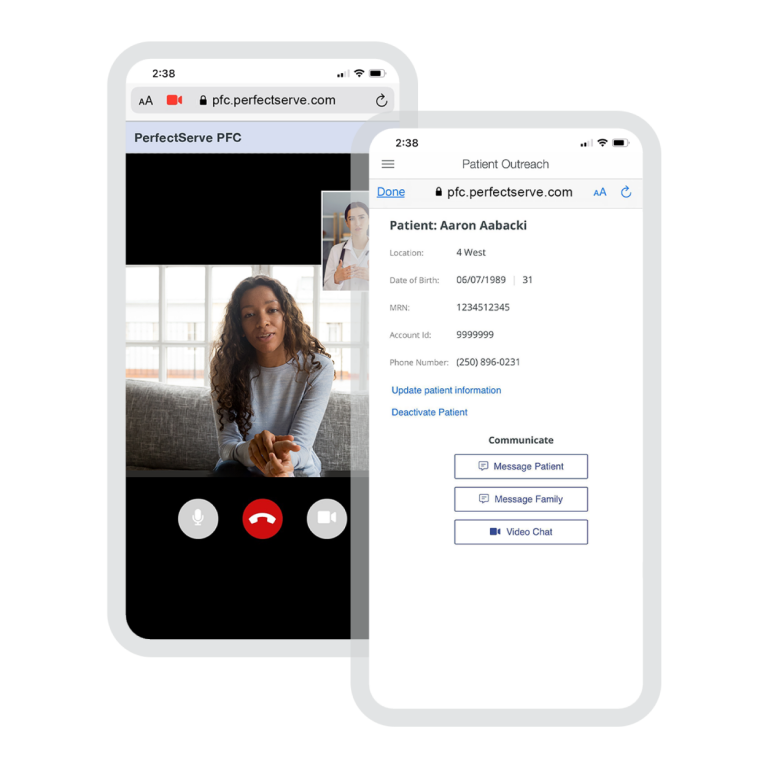Improve Patient Experience Before, During, and After Care
TABLE OF CONTENTS
When it comes to communicating with patients, text messages reach them quickly and efficiently. While email and phone calls are increasingly ignored, 90% of text messages are read within three minutes.1 When patients feel connected with their physician and medical practice, this improves a clinics value-based care.
Let’s explore some opportunities to engage with patients via text message throughout their healthcare journey to reduce the cost of outreach and improve the patient experience.
Changing Patient Expectations
The healthcare industry has shifted focus from volume to value, working on the “Triple Aim” of enhancing patient experience (including health and satisfaction), improving the health of populations, and reducing costs.2 Patient satisfaction has become linked to reimbursement at a time when patient expectations for the healthcare experience continue to evolve.
Patients, who are financially responsible for a large portion of their care, approach healthcare encounters with consumer expectations. They expect convenience, personalization, and access to care anytime from anywhere.
Healthcare organizations need new ways to keep patients engaged in their care. They must continually assess patient satisfaction. Unfortunately, improving health system performance toward Triple Aim results has led to worrying rates of clinical burnout.
With technology often cited as one of the leading causes of burnout, organizations are now focusing on the “Quadruple Aim,” which includes provider experience and satisfaction.3 The Quadruple Aim recognizes the importance of usability, effective care processes, and improved clinical workflows to achieve Triple Aim results.
Below are some strategies designed with the Quadruple Aim in mind, reducing administrative burden with patient, population, and diagnostic-specific automations to engage with patients before, during, and after care.
Before Care
How a patient experiences their healthcare encounter begins before the patient even steps through your door. From your website and scheduling process to visit preparation and patient intake, patients are looking for a modern, seamless, and informative experience.
Healthcare organizations looking to transform the patient experience should begin by engaging with patients before their scheduled appointments:
- Care Preparation Instructions – Use procedure-specific pathways to send reminders to start pre-operative instructions.
- Appointment Reminders – Text patients reminders of dates, times, and locations of upcoming visits, along with detailed wayfinding instructions.
- Social Determinants of Health (SDOH) Support – Leverage SDOH data to assist patients through barriers, such as sharing coupons for transportation to reduce no-shows. Hennepin Health recently partnered with Lyft to target patients with a history of clinic no-shows, offering them access to a corporate Lyft account to get to their appointments. At the end of a 12-month trial period, no-show rates decreased an aggregate 27%, clinic revenue increased by $270,000, and ROI was 297%.4
- Patient Intake – Send patients a link to electronic forms ahead of time to streamline check-in.
- Real-Time Scheduling Updates – Send status updates to patients to help re-align arrival times when there are scheduling delays.
During Care
The factors that influence a patient’s experience can vary widely based on their reason and length of stay. However, we can follow the broad strokes of the Hospital Consumer Assessment of Healthcare Providers and Systems (HCAHPS) survey to better identify a patient’s perspective on their care experience.
The 18 substantive questions included in the survey focus primarily on communication with doctors, nurses, and staff during care and at the critical point of discharge. Other questions focus mainly on environmental factors such as cleanliness and sound level.5
From enabling fast, efficient communication between clinicians, patients, and family members to facilitating a more comfortable, safe, and convenient care environment, mobile messaging can greatly improve the patient experience during care.
Video Visits
Texting with patients is a quick and easy gateway into scheduled and/or on-demand video visits. PerfectServe’s Patient Engagement solution, for example, enables patients to transition from text message to browser-based video visit with the simple touch of a link—no need to download an app or set up a password.
Virtual Waiting Room
A virtual waiting room uses text messages to maintain a safe and comfortable connection with patients during in-person visits by streamlining check-in to help minimize germ exposure and discomfort.
Patient Family Updates
Family members play a crucial role in supporting patients and encouraging them to follow care plans before, during, and after their stay at the hospital. Healthcare organizations are now prioritizing patient families as part of the patient experience. Family members feel more comfortable leaving the waiting room knowing they will receive updates on patient status and return time.
With PerfectServe, care team members can update approved patient family members via secure video, voice, and/or text message. Even a family member who calls into the main hospital call center can quickly get a message to the correct on-call nurse, who can easily respond with one click, masking their personal caller ID.
Read our white paper for more examples of how the right solution can simplify, automate, and strengthen patient and family member encounters.
Integrate Nurse Call, Alert, and Alarm Notifications
Centralize communication across multiple systems onto a single platform to simplify clinical workflow while eliminating extraneous noise. With a solution like PerfectServe Clinical Collaboration, nurses can receive alerts on their mobile devices and choose to accept, escalate for assistance, or call back to speak directly with patients.
If a patient pushes the call button for a non-urgent or nonclinical request (such as a water request), the notification can automatically route to a Patient Care Technician, reducing nurse interruptions during care. Patients benefit from reduced noise and faster response times—critical factors in HCAHPS scores.
After Care
Preventable hospital readmissions continue to be top-of-mind, thanks largely to Medicare’s Hospital Readmissions Reduction Program (HRRP) and readmission penalties. HRRP is the “value-based purchasing program that encourages hospitals to improve communication and care coordination to better engage patients and caregivers in discharge plans and, in turn, reduce avoidable readmissions.”6
According to a study published in BMJ Quality & Safety, patients reporting high satisfaction and good provider communication were less likely to be readmitted.7 Decreasing preventable readmissions requires that patients understand and adhere to their care plan, that pain is managed, and that follow-up care is scheduled and attended in less than two weeks.8
Post-Discharge Assessments
Leading hospitals are applying a text-first strategy to monitor treatment, assess pain, and send care plan reminders (such prescription refill reminders). Care teams can use text messages to deliver questions to patients one at a time or all at once with a simple link to a secure web survey.
Frequently checking in both increases patient satisfaction and allows clinicians to escalate concerning responses to secure chat or phone call if needed. PerfectServe’s solution, for example, lets users share a secure chat link that allows patients to discuss more detailed and personal health information.
Park Nicollet Methodist Hospital worked with PerfectServe to launch a text-first follow-up program that included a series of customized questions to assess a patient’s risk for readmission. 70% of questions sent via text message received a response from patients. PerfectServe’s dashboard allowed Park Nicollet to collect and analyze every patient response and nonresponse, segmenting the patient population into risk categories and automatically flagging patients that need immediate follow-up.
Park Nicollet’s results showed that patients who received and responded to text messages were 32% less likely to readmit than those solely contacted by phone (results are risk adjusted to account for the relative complexity of each patient’s conditions).
Patient Satisfaction Surveys
While CMS’ HCAHPS survey has incentivized improvements in patient experience, the response rate from patients has been on the decline.9 Declining response rates could be tied to patients’ perception of the survey’s effectiveness. HCAHPS surveys are administered 2 to 42 days after discharge and often cannot yield the timely data hospitals need to quickly address patient issues.
Given the high impact HCAHPS results have on a hospital’s financial performance, it’s important to seize opportunities to survey patients before the CMS in order to preemptively mitigate issues and improve patient satisfaction. For patient satisfaction surveys to be actionable, they need to be easy and customizable, targeting specific patient populations and encouraging meaningful dialogue.
Deploying surveys via text message is a cost-effective approach to obtaining timely patient insights. With solutions like PerfectServe’s Patient Engagement, surveys can be automatically triggered after healthcare encounters while the experience is fresh on the patient’s mind. Patients who indicate dissatisfaction become a service recovery opportunity. Contacting them to show concern and learn more can inform systemic improvement and change the patient’s impression of the organization.
Deliver an Exceptional Experience
PerfectServe allows hospitals to reach patients and their family members in real time before, during, and after care to better support, assess, and improve the patient experience. Book a demo with a clinical communication specialist to see how we can help you deliver an exceptional patient experience.
Resources:
1. SMS vs Email and Apps: Customer engagement infograph, VoiceSage, Jun. 14, 2018: voicesage.com/blog/sms-compared-to-email-infograph
2. IHI Triple Aim Initiative, Institute for Healthcare Improvement (IHI): ihi.org/Engage/Initiatives/TripleAim
3. From Triple to Quadruple Aim: Care of the Patient Requires Care of the Provider, The Annals of Family Medicine, T. Bodenheimer, C. Sinsky, Nov. 2014: annfammed.org/content/12/6/573.full
4. Do Rideshare Tools Reduce Transport Barriers, Patient No-Shows?, Xtelligent Healthcare Media, Patient Engagement HIT, S. Heath, Jul. 24, 2018: patientengagementhit.com/news/do-rideshare-tools-reduce-transport-barriers-patient-no-shows
5. The HCAHPS Survey – Frequently Asked Questions, Centers for Medicare & Medicaid Services (CMS): cms.gov/Medicare/Quality-Initiatives-Patient-Assessment-Instruments/HospitalQualityInits/Downloads/HospitalHCAHPSFactSheet201007.pdf
6. Hospital Readmissions Reduction Program (HRRP), Centers for Medicare & Medicaid Services (CMS): cms.gov/Medicare/Medicare-Fee-for-Service-Payment/AcuteInpatientPPS/Readmissions-Reduction-Program
7. The association between patient experience factors and likelihood of 30-day readmission: a prospective cohort study, BMJ Quality & Safety, J. Carter et al., 2018: qualitysafety.bmj.com/content/27/9/683
8. Timeliness of Outpatient Follow-up: An Evidence-Based Approach for Planning After Hospital Discharge, The Annals of Family Medicine, C. Jackson, PhD, et al., Mar. 2015: ncbi.nlm.nih.gov/pmc/articles/PMC4369604
9. HCAHPS Survey Non-Response Bias Impacts Scores, Practice Improvement, Xtelligent Healthcare Media, Patient Engagement HIT, S. Heath, May 1, 2019: patientengagementhit.com/news/hcahps-survey-non-response-bias-impacts-scores-practice-improvement





